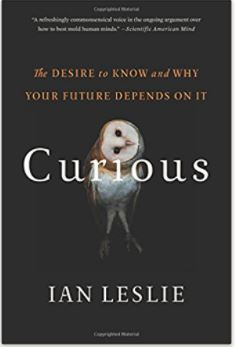In modern organizations, indeed in our digital world, the key modes of working will rely on connection, communication, collaboration and cooperation.
With whom you do work, and with whom you make that work available, are in fact more important than the task itself. This can seem like a radical departure from the way most people think about how they work. And, I suppose it is. That’s why, however, it is at the heart of the disconnect and dysfunction that we feel in our working lives.
The maxim is true: Anything that can be automated will be. With the advent of scripting, coding and AI, nearly any task that one can complete in isolation and anonymity will be replaced by automation. From truck drivers to data specialist, the machines are coming.
Rather than dystopian, I see this as an opening to something greater: The things that machines will do in our place will also liberate people to be more human.
Connection
The key function of human work will be to search for insights: “Computers are for answers. Humans are for questions.” (I’ve seen this quote attributed to several people, but I think it is Kevin Kelly. Please correct me if I’m wrong.)
 At its core, forming the right questions and working to make sense of the answers that come back to us is a creative act. It is a human act. Creativity thrives on connection, discovery and the combination of ideas and objects that we exchange with others. Any creative output is not complete until others react to it. And if the creation is purposeful (=work), then it is only as useful as the feedback we get and how we revise and recreate.
At its core, forming the right questions and working to make sense of the answers that come back to us is a creative act. It is a human act. Creativity thrives on connection, discovery and the combination of ideas and objects that we exchange with others. Any creative output is not complete until others react to it. And if the creation is purposeful (=work), then it is only as useful as the feedback we get and how we revise and recreate.
Our ability to connect broadly, with a diverse trusted network of people that pulls together multiple disciplines and viewpoints, is the essence of purposeful creativity.
Communication
Building your network to find new people, ideas and processes, requires an active practice. There is no substitute for personal, deep, intimate conversation. When you find those opportunities, treasure them and capture the outcomes in a way that makes the ideas applicable.
In our digital world, however, we have more opportunity to communicate widely than was ever possible before. Email was a good start 25 years ago, but it’s usefulness is limited. The key is to communicate widely and openly: Let your voice be heard far and wide if you have something to say. Conversely, listen to conversations among others. The human voice will still carry the news.
Find channels that allow you to contribute and listen to those whom you are not immediately connected, or may not know (yet!). Ideas travel and their originators obscured. But the channels create a collective greater than is possible between the few. For me, Twitter has served this purpose, because I can choose to “listen” to whom I choose, and the act of contribution and the constant pruning of my community is an important part of my practice. You may choose other channels, but without communication, there is no growth.
Collaboration
This is the easiest part for people to grasp, and probably something you already do (and do well, hopefully). Working with others to complete specific tasks and projects can also benefit from the other “Cs” discussed here. The question is, what can others learn from your current collaboration, and how to share that?
Cooperation
It doesn’t surprise me how much confusion there is about what it means to act cooperatively: In ways that create the potential that others will benefit from what we do though if, when, and how is unknowable.
True cooperative functions actually fly in the face of command-and-control, competitive, hierarchical industrial-military systems that we are often so familiar that we may not even be aware of them most of the time.
Acting cooperatively is really the culmination of communication, connection and collaboration. When we share ideas, pass on our stories of success and failures, we lay the crumbs for others to follow. Even as we are following in the footsteps of others. We are all in it together – no matter how you define your current it. Serendipity happens, but only when we are open to and contribute to cooperative channels.
Learning, unlearning, relearning through and with others. Synthesizing ideas. It’s what I call The Learning Age.





